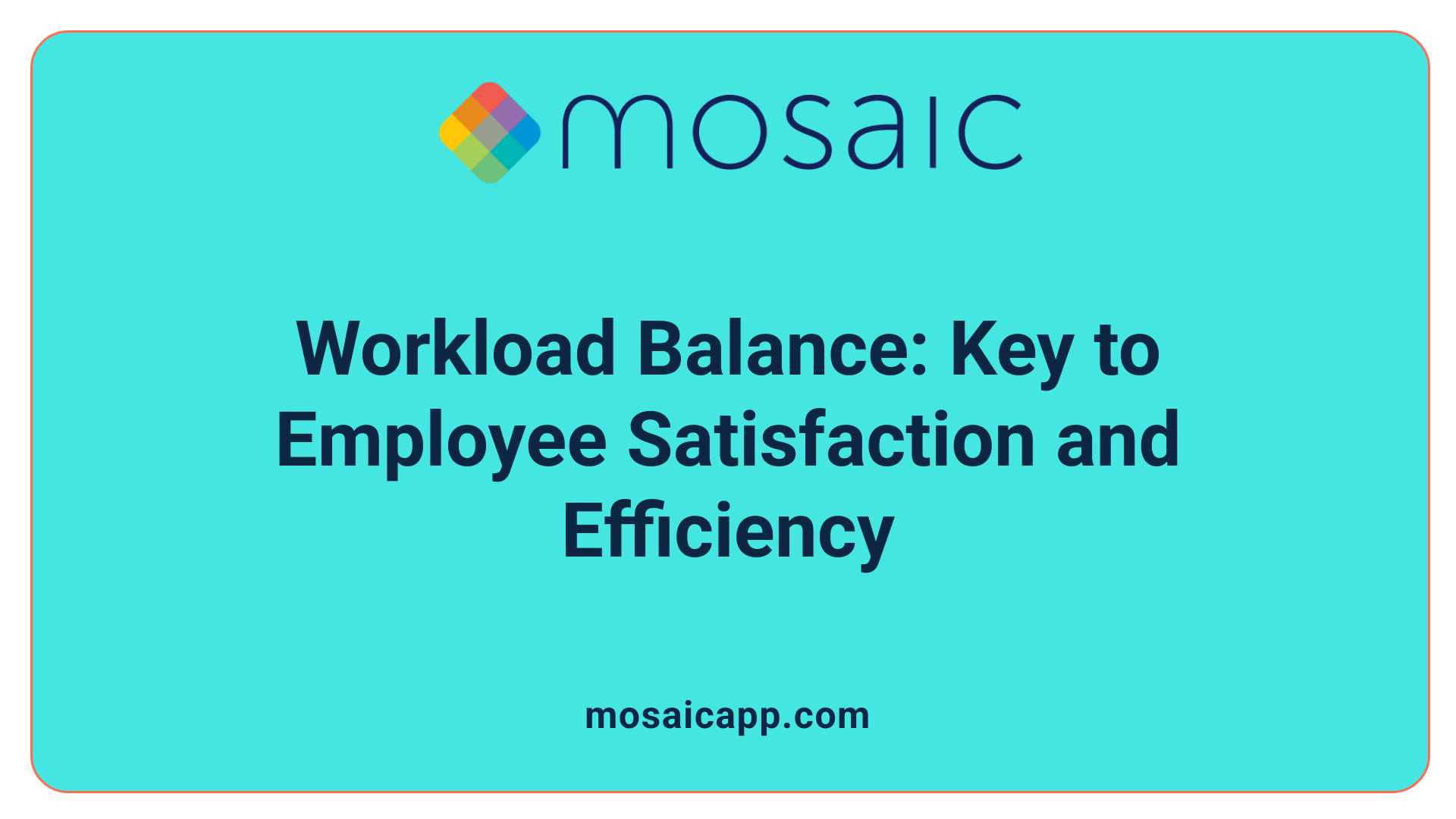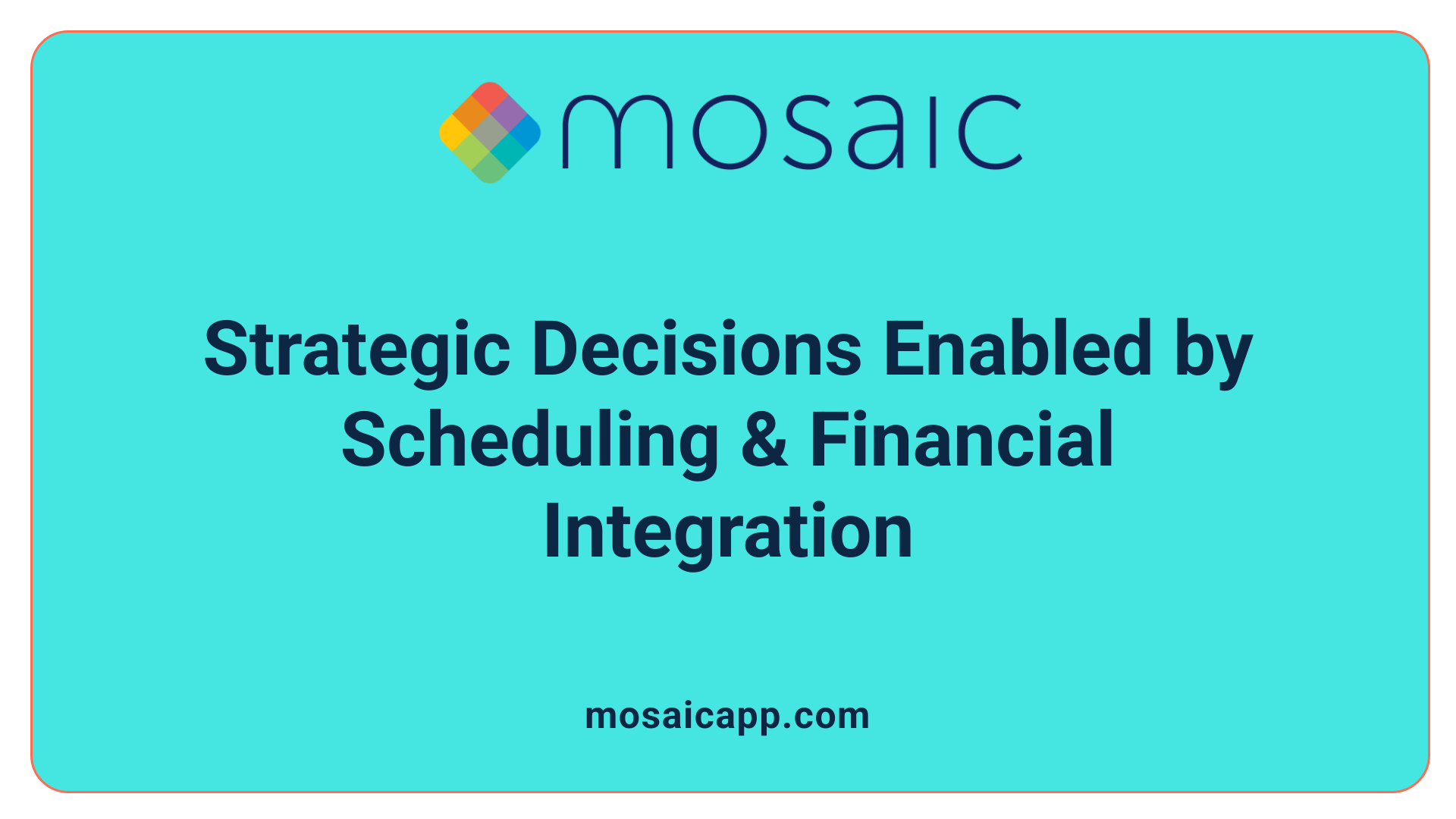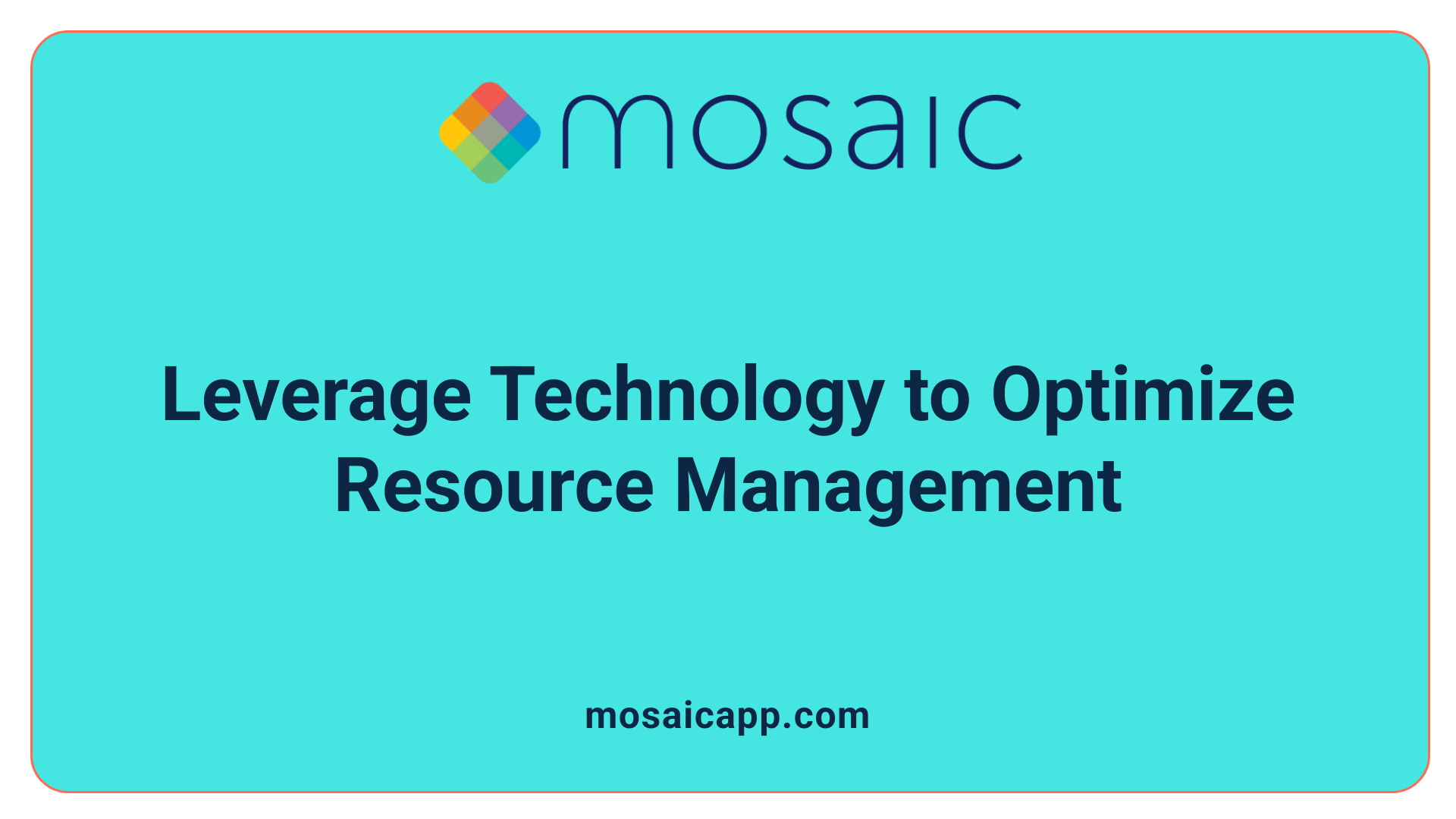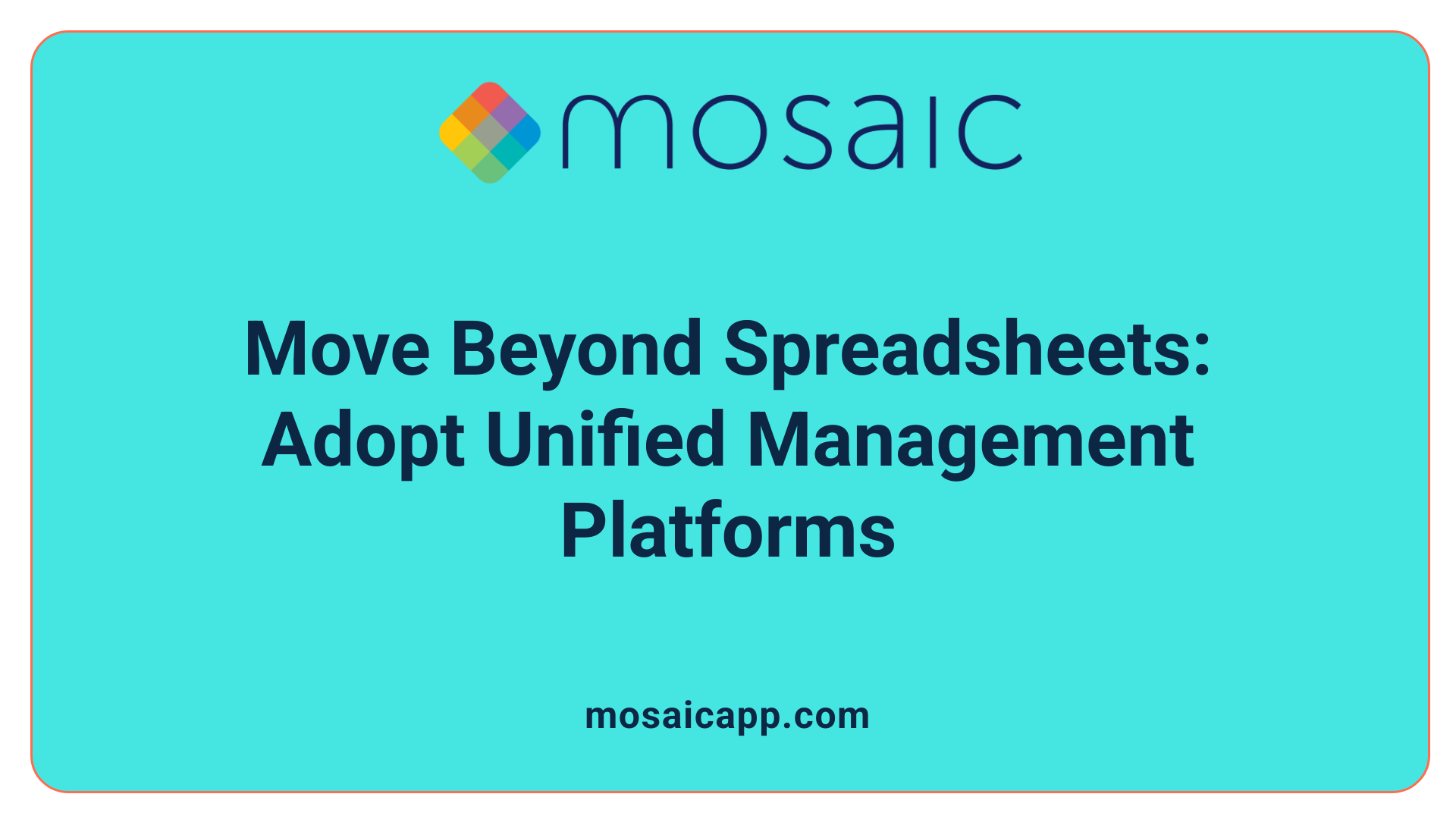Connecting the Dots Between Resource Planning and Workforce Stability
In industries where project deadlines and profitability are tightly intertwined, the way a firm manages its resources can make or break its success. While project management focuses on timely task completion, resource planning plays a surprisingly pivotal role in employee retention. This article explores how effective resource planning techniques not only optimize workloads and profitability but also enhance employee satisfaction and reduce burnout, ultimately sharpening a firm's competitive edge.
The Critical Role of Resource Planning in Project-Based Firms

What is resource management and how does it differ from project management?
Resource management is the strategic planning and allocation of resources such as team members, their skills, finances, equipment, and materials to meet the demands across various projects. It functions at the company level, with a focus on ensuring that resources are optimally distributed, avoiding overuse or underuse.
In contrast, project management concentrates on planning and executing specific tasks and timelines within a particular project. It involves building project plans, defining roles, tracking progress, and managing communication with stakeholders. Project managers focus on the detailed delivery of project outcomes within set schedules and budgets.
Definition of resource management
Resource management encompasses activities like organizing resources based on skills and availability, continuous communication with project managers, and reallocating resources as project needs evolve. It ensures that all internal and external assets are effectively used to maintain balanced workloads and prevent burnout.
Importance of resource planning
Effective resource planning is essential for architecture and engineering firms to maintain efficiency and profitability. Proactive, data-driven planning allows firms to forecast workloads and adjust allocations before last-minute issues arise. When workloads are balanced across teams, productivity is maximized, and employee retention improves by mitigating burnout.
Furthermore, integrating scheduling with financial planning gives better insight into labor costs and project profitability, which supports smarter decision-making at all firm levels. Utilizing technology platforms like BQE CORE centralizes scheduling, automates workload balancing, and integrates real-time data to enhance operational efficiency. This modern approach replaces outdated spreadsheets with unified management systems that increase visibility into project statuses, resource use, and overall firm performance.
Ultimately, resource management and project management complement one another. While project managers ensure projects stay on track, resource managers safeguard company-wide resource health, together driving successful project delivery and sustainable growth.
How Proactive, Data-Driven Planning Drives Workforce Stability

How does proactive resource planning help firms manage workloads and prevent burnout?
Proactive resource planning is essential for architecture and engineering firms to maintain workforce stability. By leveraging data-driven forecasting, firms can predict future project workloads with greater accuracy. This foresight allows them to allocate tasks thoughtfully across teams, ensuring no individual is overwhelmed.
This careful balancing mitigates the risk of staff burnout, a common issue when workloads are uneven or unexpected changes require emergency work. By anticipating busy periods early, firms avoid last-minute adjustments that disrupt work-life balance and reduce efficiency.
In practice, proactive planning reduces stress on employees and supports sustainable productivity. It also facilitates better workforce management by providing visibility into upcoming demands, enabling managers to make informed decisions about staffing and resource allocation.
Ultimately, incorporating data-driven forecasting into resource management optimizes employee utilization while fostering a healthier work environment, leading to higher retention rates and overall firm success.
Balancing Workloads to Boost Productivity and Retention

Why is balancing workloads important for employee retention?
Balanced workloads ensure employees are neither overburdened nor underutilized, which prevents burnout and disengagement. This balance optimizes productivity and leads to higher job satisfaction, thereby improving employee retention rates.
Workload balancing techniques
Effective workload balancing involves distributing tasks and projects among team members based on their skills and availability. Proactive and dynamic resource planning tools help managers forecast upcoming workloads and reallocates resources accordingly. Technology platforms like BQE CORE support automated workload balancing, allowing for quick adjustments to meet changing project needs and prevent overloading individuals.
Impact on employee satisfaction
When workloads are balanced, employees experience less stress and a clearer sense of purpose. Equitable assignment of responsibilities fosters a supportive work environment, reduces turnover, and enhances morale. Satisfied employees are more engaged and motivated, which has a positive ripple effect on overall team dynamics and project outcomes.
Optimization of productivity
Balanced workloads align team capacity with project demands, minimizing downtime and maximizing efficiency. By avoiding bottlenecks and distributing effort evenly, firms can maintain steady progress across multiple projects. This approach not only upholds quality standards but also facilitates better time management and resource utilization throughout the firm.
Integration of Scheduling and Financial Planning for Strategic Decisions

How does integrating scheduling with financial planning improve firm profitability?
Integrating scheduling with financial planning allows architecture and engineering firms to gain a comprehensive view of labor costs alongside project timelines. This alignment helps firms understand exactly where financial resources are being utilized, allowing for more informed decisions to optimize both budgets and schedules.
By syncing schedules with financial plans, firms can detect potential cost overruns early and adjust resource assignments before expenses escalate. This transparency ensures that labor costs are aligned with revenue projections, enabling better control over project profitability.
Moreover, this integration supports dynamic adjustments. For example, if a project requires more intensive effort at a certain phase, adjusting the schedule alongside its financial implications prevents surprises that could impact profit margins.
Implementing such integration leads to smarter resource allocation—teams are assigned based on not only availability but also cost-effectiveness, reducing unnecessary expenditure. This proactive approach streamlines operations, drives profitability, and enhances overall financial health.
Technology platforms like BQE CORE exemplify how centralized scheduling combined with real-time financial tracking can facilitate this integration. Firms adopting these systems report improved visibility into labor costs and project profitability, empowering leadership to make strategic decisions swiftly and confidently.
Technology's Role in Centralizing and Streamlining Resource Management

What technologies aid in better resource planning and how?
Modern architecture and engineering firms increasingly rely on advanced technology tools to enhance resource planning and project scheduling. Platforms like BQE CORE play a vital role by providing centralized scheduling, enabling firms to manage project timelines and resource allocation all in one place. This eliminates reliance on disconnected spreadsheets and reduces the risk of errors.
Dynamic forecasting is another powerful feature these tools offer. By using data-driven insights, firms can anticipate future workloads, balance assignments across teams, and proactively adjust plans to avoid last-minute crises. This responsiveness ensures smoother project delivery and optimized utilization of staff and resources.
Real-time data integration further strengthens decision-making processes. Instant updates on project progress, resource availability, and financial metrics give managers a comprehensive view of firm-wide operations. This transparency supports timely interventions, accurate labor cost tracking, and overall improved profitability.
By uniting scheduling with financial planning on a single platform, firms gain clearer insight into how resources impact their bottom line. This enhanced visibility empowers project managers, resource managers, and principals alike to make smarter, more informed decisions. Ultimately, leveraging these technological advances helps A&E firms boost operational efficiency, reduce burnout, and support sustainable growth.
Replacing Spreadsheets with Unified Management Platforms

What are the limitations of spreadsheets in resource management?
Spreadsheets have long been used for project scheduling and resource management, but they come with several drawbacks. They often lead to data silos since different teams maintain separate files, making collaboration difficult. Manual updates are time-consuming and prone to errors, which can result in miscommunication and last-minute adjustments. Furthermore, spreadsheets lack real-time integration, so project status and resource utilization data quickly become outdated.
What benefits do centralized management platforms offer?
Centralized platforms like the BQE CORE drastically improve operational efficiency for A&E firms. By replacing disconnected spreadsheets, these platforms consolidate all scheduling, forecasting, and resource allocation data in one place. This unified approach enables dynamic workload balancing, automated updates, and consistent use of accurate data across the firm. It enhances coordination between teams and supports proactive decision-making based on real-time insights.
How does enhanced visibility and seamless data flow improve firm performance?
With a unified system, project managers and principals gain transparent visibility into project progress and resource deployment across multiple projects. This transparency helps avoid staff burnout by balancing workloads effectively and supports financial planning by aligning labor costs with project budgets. Better data flow reduces administrative overhead and minimizes the risk of costly errors, ultimately boosting profitability and employee retention.
Why are unified management platforms preferred over spreadsheets?
Unified management platforms streamline data flow, replace disconnected spreadsheets, and provide enhanced visibility into project status, resource utilization, and overall firm performance, reducing errors and inefficiencies.
The Long-Term Value of Modern Resource Management Systems
What are the long-term benefits of adopting modern resource management systems?
Investing in modern resource management systems is more than just upgrading software—it's a strategic decision that supports the firm's long-term growth and operational success. These systems enable scalable solutions that grow alongside the firm's expanding project portfolio and workforce needs.
How do these systems support scalability and growth?
Modern platforms, such as BQE CORE, offer dynamic forecasting, automated workload balancing, and real-time data integration. These capabilities help firms adapt quickly to changing project demands without sacrificing efficiency or quality. By streamlining resource allocation across multiple projects, firms can manage increasing workloads without overextending their teams.
What benefits do these systems provide across different organizational roles?
From project managers focused on task execution to principals overseeing firm-wide strategy, resource management tools improve visibility and communication. Project managers gain access to accurate staffing data and scheduling updates, allowing better planning and tracking. Principals and executives benefit from integrated financial and resource insights, enabling smarter budgeting and profitability analysis. Clients indirectly benefit from smoother project delivery and consistent quality.
Ultimately, adopting modern resource management systems equips architecture and engineering firms for sustainable success by enhancing productivity, reducing staff burnout, and fostering an environment where teams can thrive while projects stay on track and profitable.
How Strategic Resource Management Reduces Employee Burnout
In what ways does strategic resource management reduce employee burnout?
Strategic resource management plays a crucial role in mitigating employee burnout by carefully balancing workload distribution across teams. When workloads are evenly allocated based on employee skills and availability, staff members are less likely to encounter overwhelming pressures or idle periods. This balanced approach prevents the exhaustion associated with last-minute task adjustments, which often contribute to stress and fatigue.
How does resource planning support employee wellbeing?
By proactively planning resources with data-driven forecasting, architecture and engineering firms can anticipate future workloads and adjust allocations ahead of time. This foresight reduces the need for reactive scheduling changes, creating a more predictable work environment. Employees benefit from this stability, as they can manage their tasks efficiently without persistent deadlines that disrupt personal time or work-life balance.
What effect does strategic resource management have on retention?
Firms that implement effective resource management see improvements in employee retention rates. When teams are not overburdened and feel their workloads are fair and manageable, job satisfaction increases. The investment in technology platforms that provide real-time visibility into workload and performance further supports a healthy workplace by fostering transparent communication between project and resource managers. This collaborative environment encourages employees to stay, knowing their wellbeing is prioritized alongside project success.
By aligning people-focused resource allocation with comprehensive planning tools, firms enable sustainable work conditions that not only reduce burnout but secure long-term retention and operational success.
Complementary Relationship Between Project and Resource Management
Distinct Roles and Overlap
Project management centers on the planning and facilitation of tasks to achieve defined outcomes within specific timelines and budgets. It involves building project plans, defining individual roles, tracking progress, and maintaining communication with stakeholders. Resource management, by contrast, focuses on the effective use and allocation of resources—such as personnel, finances, equipment, and materials—across multiple projects at the company level.
While these two disciplines overlap in areas like communication and coordination, their core responsibilities differ: project managers operate at the project level, managing tasks and schedules, whereas resource managers work at the organizational level, allocating and reallocating resources where needed.
Importance for Successful Delivery
Both project and resource management are critical and complementary processes for successful project delivery. The alignment between task management and resource allocation ensures that projects proceed smoothly without unnecessary delays or overworked staff.
By combining effective task tracking with strategic resource deployment, firms can enhance productivity, optimize workloads across teams, and avoid last-minute adjustments that could compromise project quality or deadlines.
People-Focused vs Task-Focused Management
Project management is primarily task-focused, concentrating on what needs to be done and when. Conversely, resource management is inherently people-focused, emphasizing who is available, skills alignment, and balancing workloads to prevent burnout and underutilization.
Strategic resource management plays a vital role in employee retention by promoting sustainable work distribution, which complements the project manager’s responsibility for delivering on time and within budget.
Together, these complementary roles reinforce each other to drive operational efficiency and project success.
Workforce Stability as a Competitive Advantage
Why is employee retention a strategic advantage for firms?
Employee retention offers numerous strategic benefits to architecture and engineering firms. By keeping experienced staff, firms avoid the high costs associated with turnover, such as recruitment, training, and lost productivity. Retaining staff also preserves valuable institutional knowledge, enabling smoother project execution and maintaining client trust.
Beyond cost savings, stable teams foster higher morale and sustained motivation. This boost in employee satisfaction directly contributes to better work quality and improved client relationships, enhancing the firm's reputation in a competitive industry.
From a financial perspective, retention correlates strongly with profitability. Reduced turnover means more consistent project delivery and less disruption, which lowers incidental expenses and supports reliable revenue streams. Efficiency gains from balanced workloads and managed resources reduce burnout and absenteeism, further driving profitability.
Ultimately, workforce stability is a crucial factor that differentiates successful firms. It builds a positive image for clients and prospective employees alike, positioning the firm as a reliable and attractive place to work and partner with. This reputation strengthens a firm's competitive edge and supports long-term growth in a challenging marketplace.
Implementing Effective Resource Planning Practices Across Firms
What are some effective resource planning practices to improve retention?
Effective resource planning in architecture and engineering firms centers on continuous communication between resource managers and project managers. This regular dialogue ensures resources are allocated dynamically based on team members' skills and current availability, minimizing burnout and underutilization.
Using centralized management platforms, like the BQE CORE platform, enhances visibility into ongoing projects and staff workloads. Such tools allow firms to forecast demand, balance workloads proactively, and adjust assignments in real-time, supporting productivity and employee satisfaction.
Strategic resource planning involves organizing teams around skill sets and upcoming project needs, promoting a culture of collaboration and teamwork. When employees feel their expertise is recognized and workload managed fairly, they are more likely to remain engaged and committed.
Continuous improvement is another essential practice. Firms should routinely analyze project outcomes, resource utilization, and employee feedback to refine scheduling and allocation processes. This adaptive approach helps accommodate changes in project scopes and market demands, contributing to better resource retention and overall success.
By focusing on these practices—collaborative communication, dynamic allocation, technology integration, and ongoing evaluation—firms can create a work environment that supports both high performance and workforce retention.
Why Resource Planning is Key to Retaining Talent and Driving Success
Resource planning extends far beyond simple task scheduling; it is a strategic tool to balance workloads, manage employee wellbeing, and enhance the financial health of firms. By adopting proactive, data-driven, and technology-enabled resource management practices, firms can reduce burnout, improve employee retention, and ultimately create a more productive, sustainable work environment. This synergy between resource planning and employee retention is the surprising link that firms must harness to thrive in today’s competitive project-driven industries.


